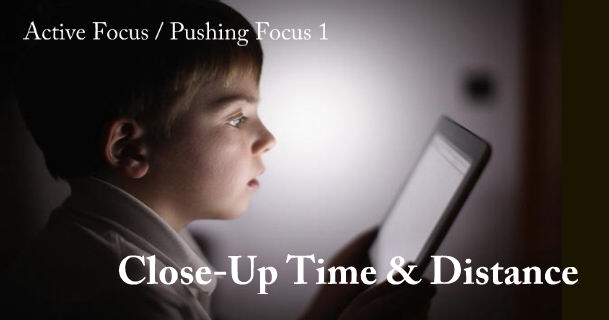
We (slowly) want to begin organizing the constraint’s of your child’s close-up activities, now that we have a baseline of centimeter and a differential prescription.
Up until now, you may not have been aware of close-up, as the culprit of your child’s myopia. Now that you do, we need to redefine distance, in a way that does not create animosity or confusion – meaning observing one close-up habit at a time, and adjusting it for safe distance, use of differential prescription, and time limits.
We will discuss some of these concepts separately. Please take some time to implement them as you make it to that installment. Things get lost in the shuffle too easily otherwise, and our pace of two installments a week is designed to give you time to apply new concepts.
There are two main components to close-up: Distance and time.
If we observe neither, we may have a child that spends three hours at 20cm from a screen – which almost certainly guarantees significant myopia in the child’s future.
Our goal is to affect both time and distance, without creating a major desire for the child to cheat. This requires slow and modest changes, to give the child’s mind time to adapt. This is quite important!
Think of diets – if you have any experience with them, you probably know the feeling of wanting to gorge yourself, the longer the food restriction continues.
The same psychological trigger happens, if we suddenly or excessively change the child’s habits. Let’s avoid this.
Let’s start by looking at distance, for the child’s most common close-up activity. Most common being defined by frequency of the activity. It could be TV, playing computer, games, or reading. Any static close-up activity (playing with toys doesn’t count here).
Take a week, if you are unsure, and keep a log of hours of each activity. If you are certain, still write down a list of activities, and time spent per week.
Let’s get to the biggest one, first.
Depending on the type of activity, and the degree of myopia, we need to be creative here (use the forum, or e-mail if you are in one-on-one, for suggestions from me).
If it’s TV, and at more than 120cm, we are ok to shelve that one for later.
Computer games, or books, we need to address first. Ergonomics here, are important. Laying on the living room floor, with the iPad 10cm from the child’s face, definitely needs to be stopped immediately. Likewise, smartphones are a bad idea altogether. In case of tablets, we need to establish use that creates a fixed distance. This could be putting the device on a stand, on a table, at a fixed position from a chair. I have seen parents get creative, with permanently mounting stands, and disallowing use of the device outside of the stand (as example).
Remember, it is the habit, we need to build. We have to keep the child at a good 50cm or so from that device, at all times, at minimum.
Of course, we never, ever, ever want to have the child use a regular minus prescription for any close-up work. That, of all things, is the biggest no-no of all. Treat it like sticking fingers into an electrical outlet, or drinking drain cleaner. It is the single biggest trigger to rapidly increase myopia, and can’t be allowed – at all.
Books are a challenge, for ergonomics. There too though, stands might be a solution, though that still leaves us with school as an issue – and we don’t want to tell the child to use a stand there, risking ridicule of his/her peers.
What are we doing, today?
This installment is simple:
1. Make a log of all close-up activities, sorted by total amount of time.
2. Pick the biggest consumer of close-up activity.
3. Brain storm ideas to fix the distance for that activity. Creativity may be necessary.
Keep in mind how great of a service you are doing for the child’s eyesight health. Creating these habits not only help protect his/her eyesight now, but build a foundation for future habits – the things we get used to as children are strongly rooted and will carry us through adult life.
Getting healthy eyes with your help now, and then knowing and practicing keeping distance from things like phones and tablets, is an opportunity so many children never get.
So let’s make sure we implement the three simple steps of this installment, before moving on to the next one.
Cheers,
-Jake
Session: Audio Track
pending …
Session: Video Stream
pending …
